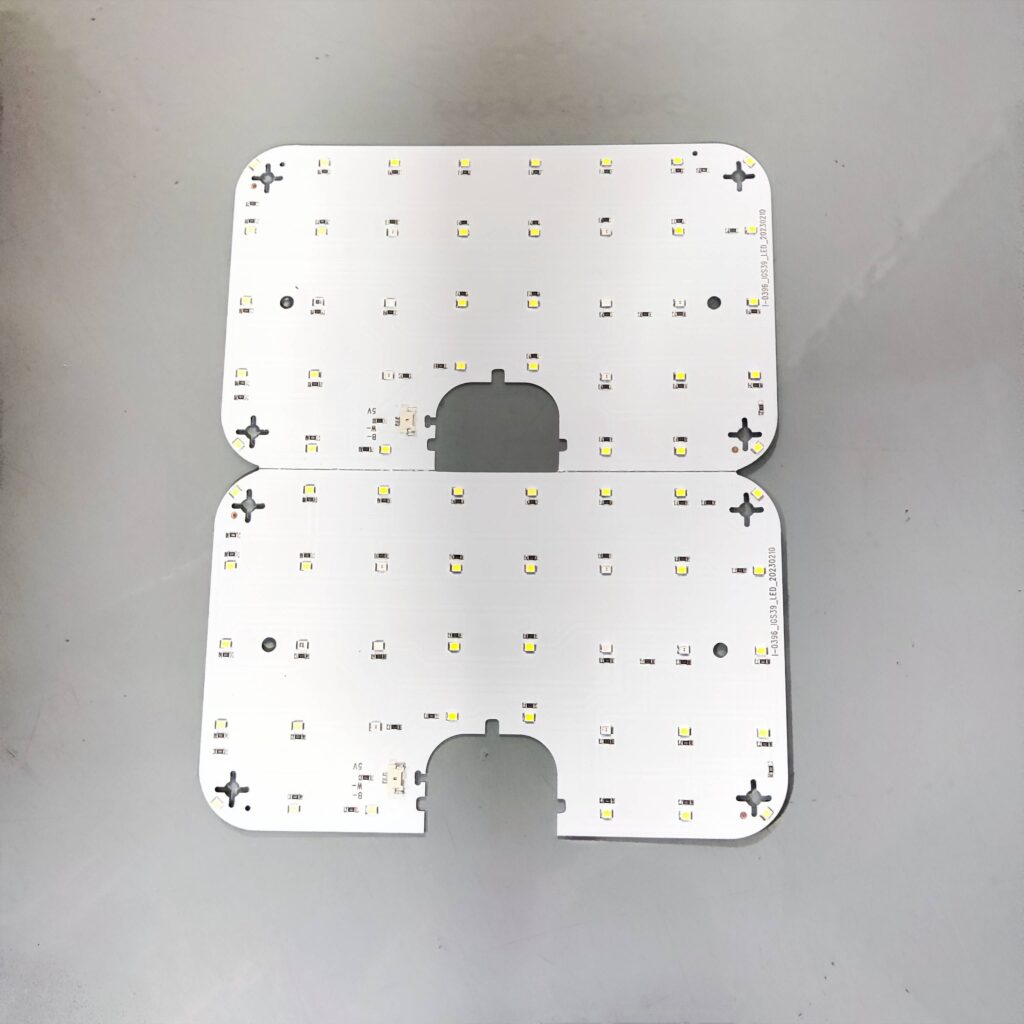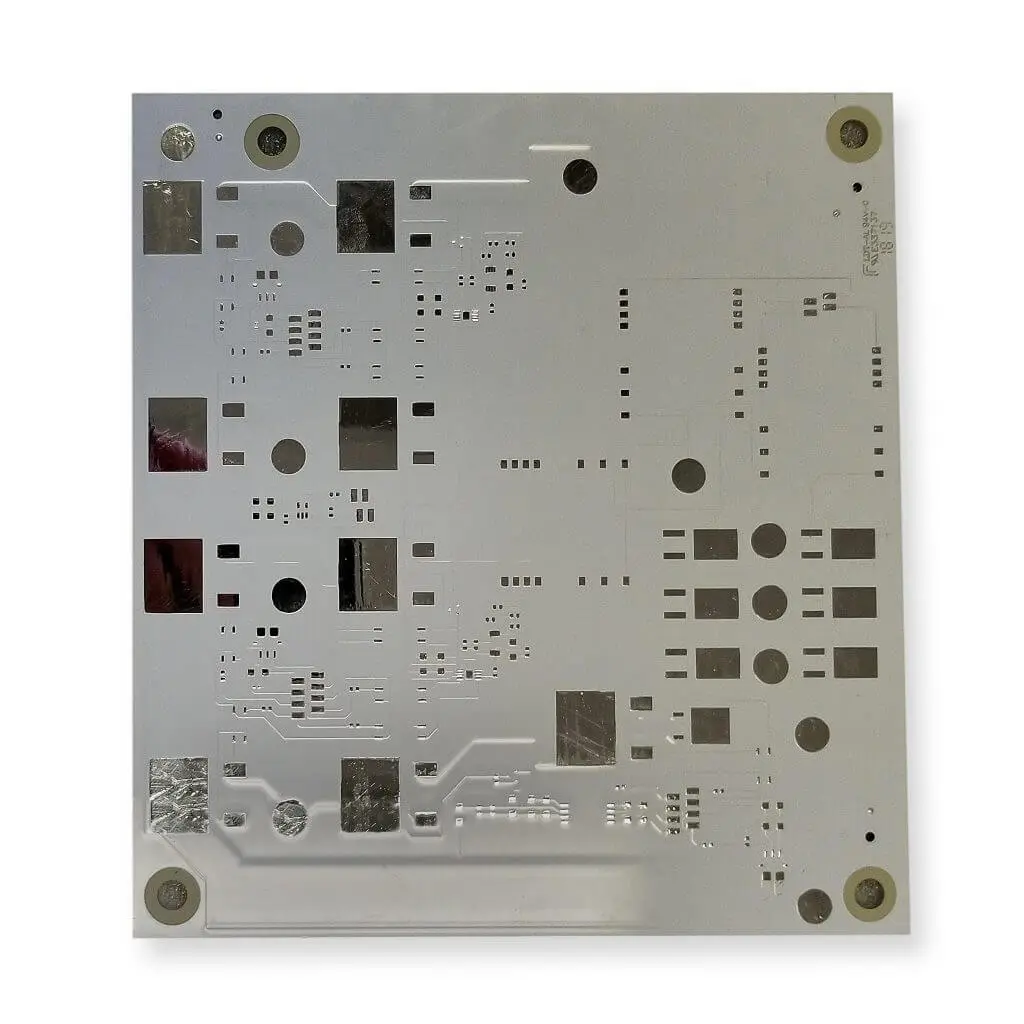Aluminum printed circuit boards (PCBs) are a type of metal-core PCB that is widely used in various industries due to its excellent thermal conductivity and high durability. In this article, we will discuss everything you need to know about aluminum PCBs, including their applications, advantages, manufacturing process, and design considerations.
What is Aluminum PCB?
An aluminum PCB is a type of PCB that has a thin layer of aluminum on the top and bottom sides of the substrate. The aluminum layer acts as a heat sink, which helps dissipate heat from the components on the board. Aluminum PCBs are widely used in applications that require high thermal conductivity, such as LED lighting, power supplies, automotive electronics, and aerospace equipment.

Advantages of Aluminum PCB
The main advantage of aluminum PCBs is their excellent thermal conductivity. The aluminum layer on the board acts as a heat sink, which helps dissipate heat from the components on the board. This results in lower operating temperatures and increased reliability of the electronic components. Aluminum PCBs are also highly durable, with good mechanical strength and resistance to corrosion.
Aluminum PCB Manufacturing Process
Aluminum PCBs can be manufactured in a variety of sizes and thicknesses, depending on the specific requirements of the application. The production range for aluminum PCBs typically includes:
- Board thickness: 0.5mm to 6.0mm
- Copper thickness: 0.5oz to 6.0oz
- Board size: up to 24″ x 48″
- Minimum hole size: 0.006″
- Minimum trace/space width: 0.005″/0.005″
- Surface finish options: HASL, ENIG, OSP, Immersion Tin, Immersion Silver, etc.
The manufacturing process of aluminum PCBs is similar to that of traditional PCBs, with some additional steps for applying the aluminum layer. The process begins with designing the circuit layout using specialized software. The circuit layout is then printed onto a copper-clad laminate, which serves as the substrate for the PCB.
The next step is to etch away the excess copper using a chemical solution, leaving only the desired copper traces. The substrate is then cleaned and prepared for the application of the aluminum layer. The aluminum layer is typically applied using a process called thermal spraying, which involves heating aluminum wire until it vaporizes and then spraying the vapor onto the substrate.
After the aluminum layer is applied, the board is coated with a layer of protective solder mask and silk-screened with the necessary markings. The final step is to drill the necessary holes and add any required surface-mount components.
Design Considerations for Aluminum PCB
When designing an aluminum PCB, there are some important considerations to keep in mind. First, it is important to ensure that the components are placed in such a way that heat can be dissipated efficiently. This often involves placing the components in close proximity to the aluminum layer and using vias to transfer heat to the other side of the board.

Another important consideration is the thickness of the aluminum layer. Thicker layers provide better thermal conductivity but can also increase the cost and weight of the board. The thickness of the aluminum layer should be chosen based on the specific requirements of the application.
Applications of Aluminum PCB
Aluminum PCBs are used in a wide range of applications that require high thermal conductivity and durability. Some common applications include LED lighting, power supplies, motor controllers, automotive electronics, and aerospace equipment. They are also used in applications that require high-frequency performance, such as RF amplifiers and microwave circuits.
Conclusion
Aluminum PCBs are an excellent choice for applications that require high thermal conductivity, durability, and reliability. They are widely used in various industries, including LED lighting, power supplies, automotive electronics, and aerospace equipment. When designing an aluminum PCB, it is important to consider the placement of components and the thickness of the aluminum layer to ensure efficient heat dissipation. Overall, aluminum PCBs offer a high-performance solution for demanding electronic applications.